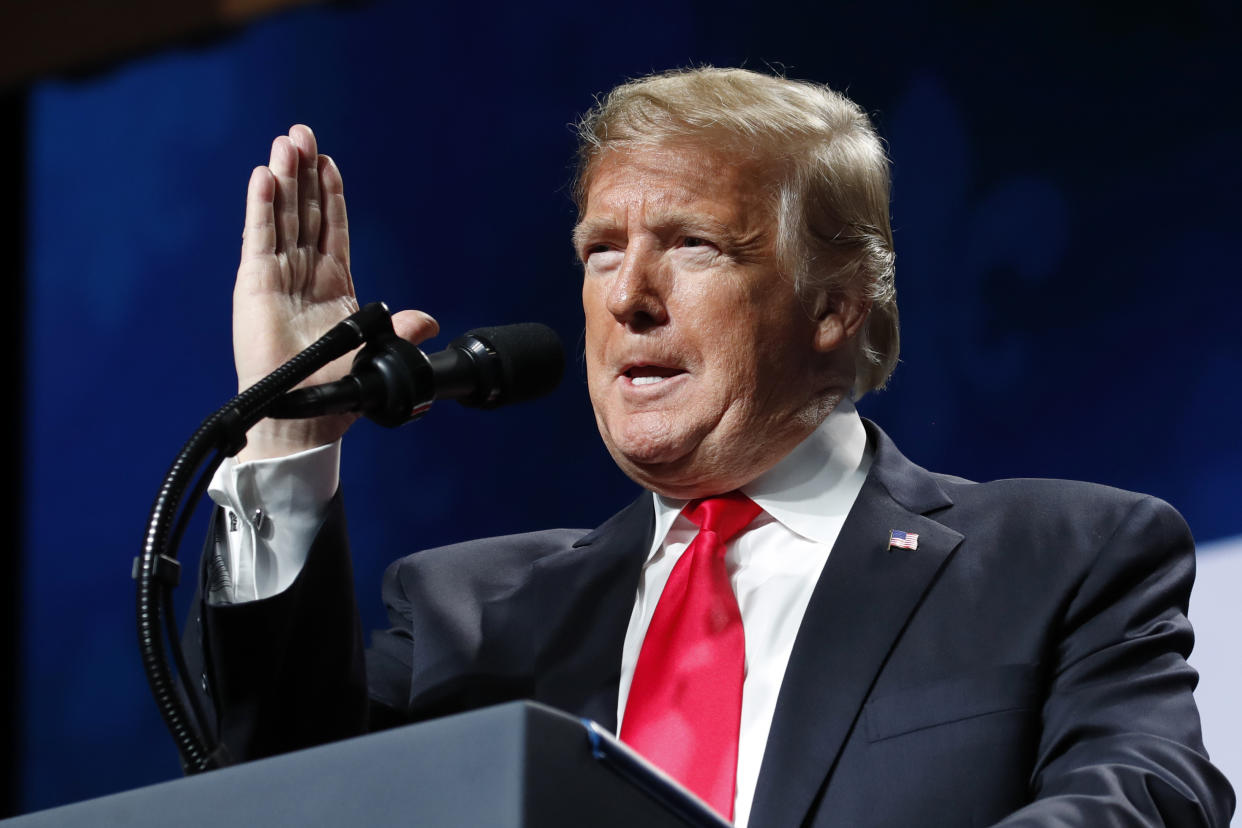Trump promises on coal, steel and China trade are all falling flat

While President Trump regularly boasts that he has singlehandedly saved the U.S. coal and steel industries after years of decline while simultaneously tackling America’s trade imbalance with China, new data shows none of those claims to be true.
Trade deficit with China
The president has long argued that the quickest way to rectify a massive trade imbalance between the United States and China is to impose tariffs on Chinese imports.
China is robbing us blind in trade deficits and stealing our jobs, yet our leaders are claiming ‘progress’ http://t.co/2r9DHxHo SAD!
— Donald J. Trump (@realDonaldTrump) December 20, 2012
“Trade wars are good and easy to win,” he tweeted last March.
In an address Monday to the American Farm Bureau Federation, Trump said his negotiations with China were “going very well,” but figures released Monday by the Chinese government showed that his plan isn’t working. Instead the U.S. trade deficit with China grew 17 percent in 2018, to a record $323.32 billion. Over the past year, as Trump launched a trade war with Beijing, Chinese exports to the U.S. grew by 11.3 percent, while China’s imports of American goods rose just 0.7 percent. American farmers have borne the biggest short term brunt of Trump’s policies, with U.S. soybean exports to China falling 98 percent in 2018 as Beijing retaliated against tariffs imposed by the president.
Steel
Our Steel Industry is the talk of the World. It has been given new life, and is thriving. Billions of Dollars is being spent on new plants all around the country!
— Donald J. Trump (@realDonaldTrump) September 17, 2018
A 25 percent tariff on imports led to a temporary spike in steel prices last year but also hurt sales and profits at companies that buy steel, such as General Motors. And as manufacturers substituted other materials or cut production, steel prices have fallen back to where they were before the tariffs and stock prices for the largest U.S. producers fell by as much as 47 percent, the New York Times reported Monday. While Trump rightly notes that some companies have announced plans to either build new steel mills or refurbish existing ones, his most frequent and extravagant boast — that “U.S. Steel just announced that they’re building six new steel mills” — has no basis in fact.
Industry experts point out that employment in the steel industry will almost certainly continue to decline as a consequence of automation, even if production and profits increase. As the conservative think tank AEI points out, “Mr. Trump’s tariffs are trying to revive a world of steel production that no longer exists. He is taxing steel-consuming industries that employ 6.5 million and have the potential to grow more jobs to help a declining industry that employs only 140,000.”
Perhaps this explains why Trump has warmed to the idea of constructing a border wall on the U.S. border with Mexico out of steel rather than concrete. In an interview with NPR, Tom Gibson, president and CEO of the American Iron and Steel Institute estimated that the barrier would require a hefty order of 3 million tons of steel.
Coal
“You know what you can’t hurt? Coal. You can do whatever you want to coal. Very important. … We are back. The coal industry is back.” — President Trump at a 2018 rally in Charleston, W.V.
After running in 2016 on a promise to save the coal industry, Trump was, after being elected, quick to proclaim victory on that score. He signed legislation overturning environmental regulations put in place during the Obama administration that industry opposed. And he tweeted in celebration when a Pennsylvania mine opened for business.
Congratulations!
‘First New Coal Mine of Trump Era Opens in Pennsylvania’ https://t.co/aIRllxNLQA
— Donald J. Trump (@realDonaldTrump) June 12, 2017
But an analysis of coal-fired power plants in the U.S. found that the industry as a whole continues its downward trajectory. In fact, more coal-fired power plants have closed during the first two years of Trump’s presidency than in all of former President Barack Obama’s first term, Reuters reported Monday.
_____
Read more from Yahoo News:



